Upgrade of old lenses with Canon EF compatible iris
Re-realization of the dreams of our (grand-) fathers:
It should be possible to have a bright viewfinder on the SLR camera while focussing, with the iris only closing to the chosen f-stop in the moment of exposure. This became possible in 1947 with the unknown Gamma Duflex. And later on it became a common feature of nearly all cameras.
But photographers who adapt or convert lenses lose this feature in most cases. For many photographic areas this is not a problem. But, for example, with flash and closed iris it is sometimes too dark for focussing. Or, when doing macro photography, the brighter viewfinder helps to get the exact point of focus.
As an experiment I converted a Vivitar 28mm f/2.8 manual lens with Contax/Yashica mount to a macro Canon EF mount with automated EF iris.
I took this lens because it was cheap and unused, I had a nearly correct EF lens iris, and the iris assembly in this lens does not rotate during foccusing.
Here the lens:
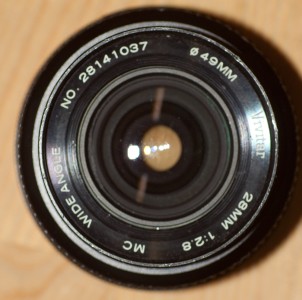
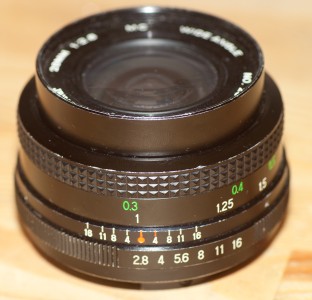
FirstI took this lens apart, took the iris assembly to get parts for the new EF iris assembly.
Here it is necessary to measure the length of the optical part, to get the same length with the new iris inside.
I took the Vivitar iris barrel for parts to build it around the EF iris.
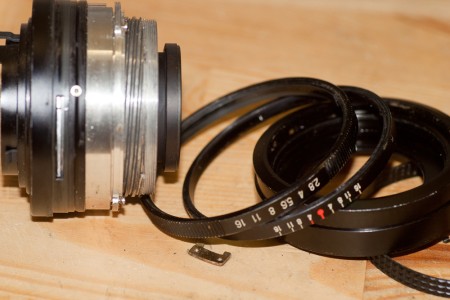
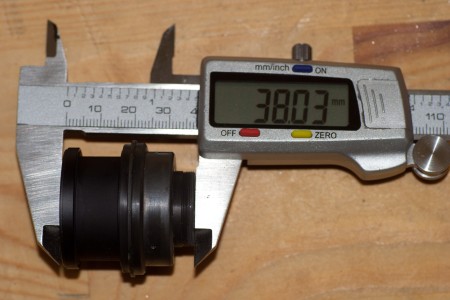
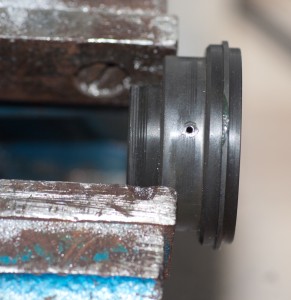
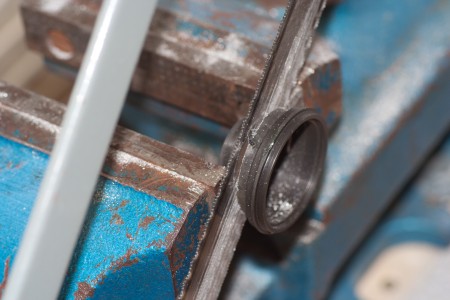
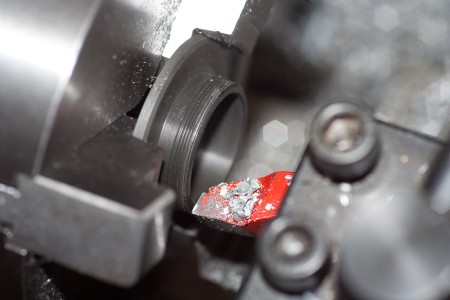
And the Vivitar back part of the lens was used to form the adapter from the helicoid with lens elements + iris inside to the EF back end of the lens.
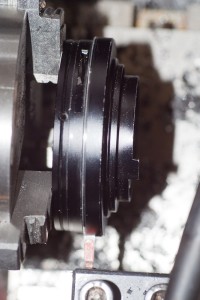
Now here the Canon EF 35-80mm f/4.5-5.6 III lens I took as iris donor. I took this lens because the iris diameter is nearly the same as on the Vivitar lens.
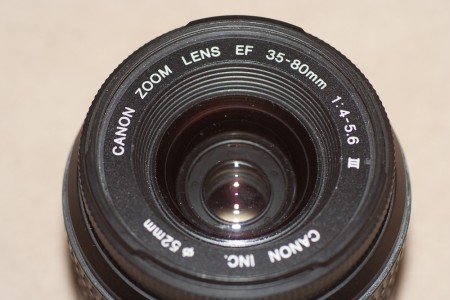
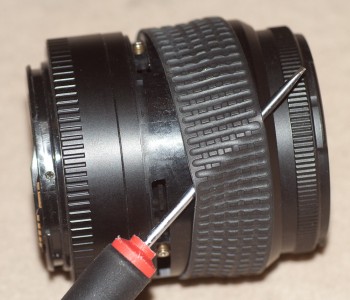
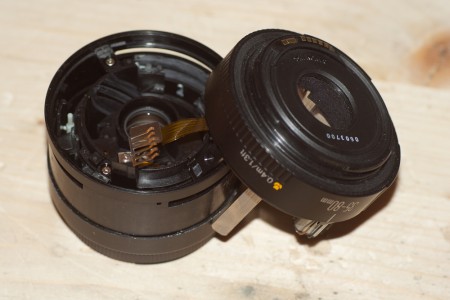
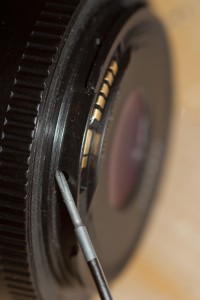
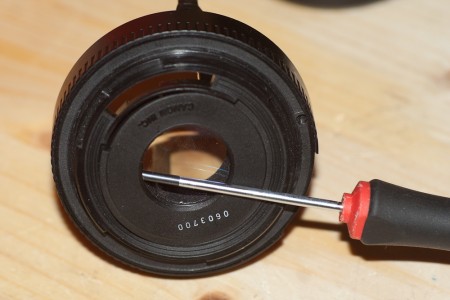
The main board of the lens is the reason why I do not made a lens which reaches infinity. This board is hard, some other lenses have a bit flexible board.
this board could not be used inside the Vivitar 28mm f/2.8 lens while the lens foccusses to infinity with the EF iris inside.
With a longer lens it should be possible.
Another idea is to solder the EF-connector away, and solder a cable between board and connector - and have the board outside the lens barrel.
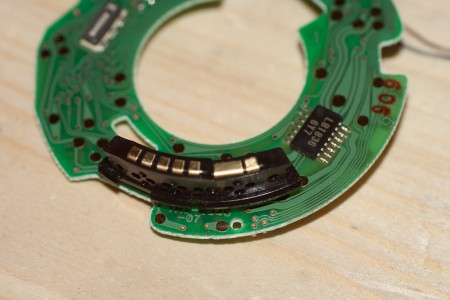
Here the Canon 35-80 EF mount part with AF motor and iris assembly. Iris is still working. And it is still working without the AF motor.
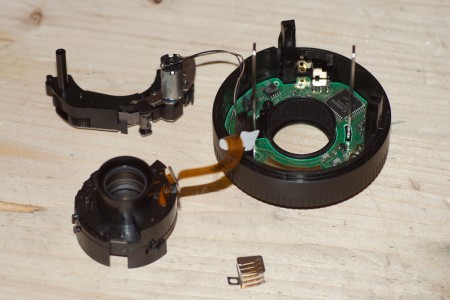
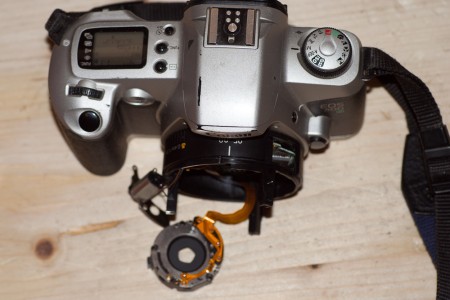
The iris assemply has two lenses inside. One of the lenses is easy to get away, but the second one need pure force to break it.
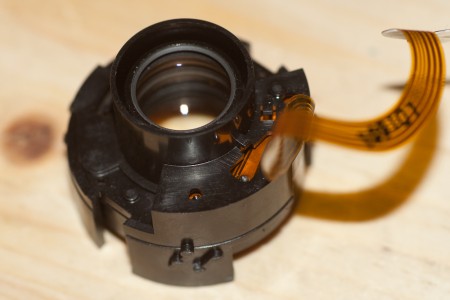
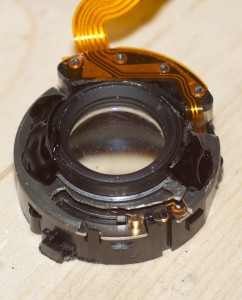
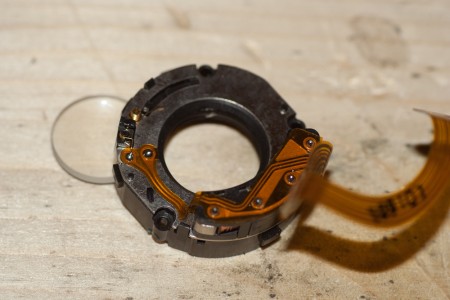
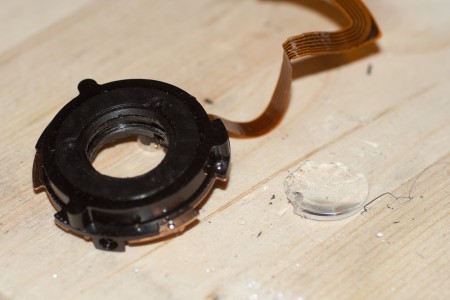
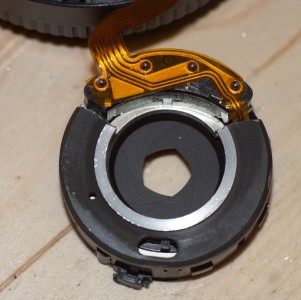
I prepared the mount back end of the EF lens to accept the Vivitar front end. I sawed the protuding parts away, and with a dremel I "cleaned" the inner diameter free.
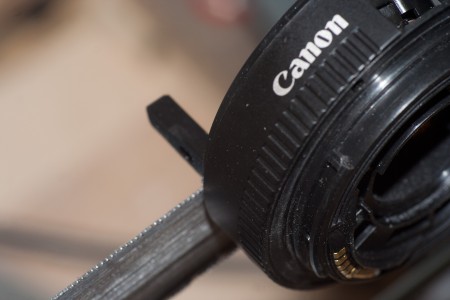
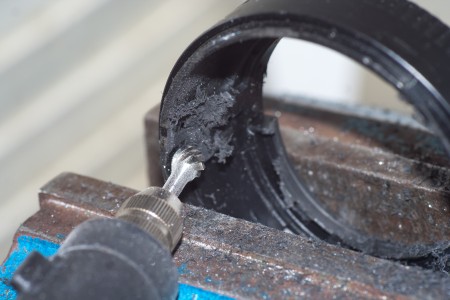
The Vivitar optical assembly has like most lenses some lenses behind the iris. These lenses need to have the correct distance to the rest of the lenses. Because of this I measured this distance before dissassembling the lens optical tube. To get this distance, and get the lenses parallel and centered, I made from the Vivitar lens housing some parts. Here the part for those Vivitar lenses behind the iris.
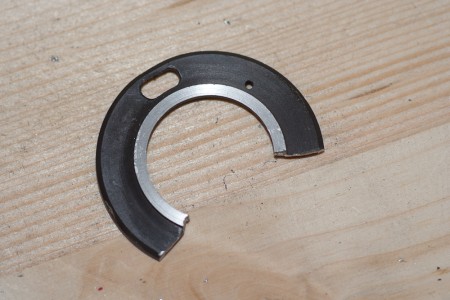
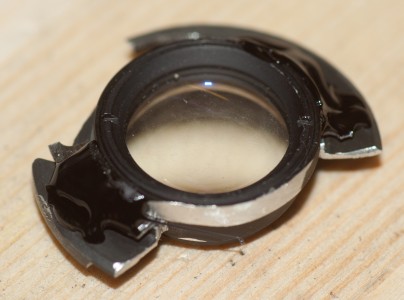
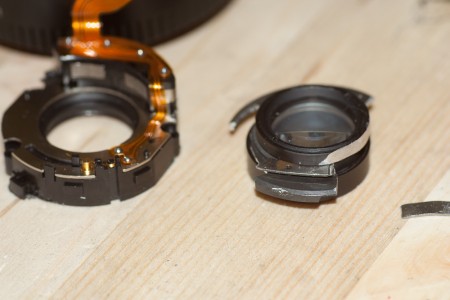
Now the Vivitar front lens part, the Canon EF iris, and the Vivitar lens back part connected. The distance is more or less the same.
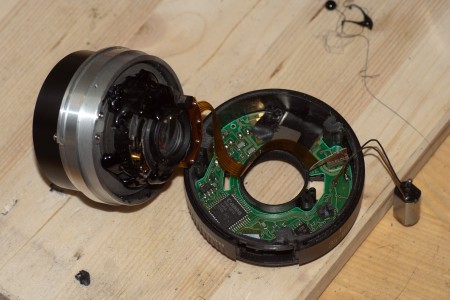
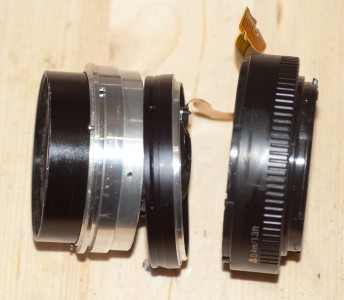
The EF back with the main board. Left with the Vivitar adapter ring that I have made on the lathe out of the Vivitar back end of the lens. After this photo it was glued with hot glue.
On the right side the electrical connector between Canon main-board and EF iris.
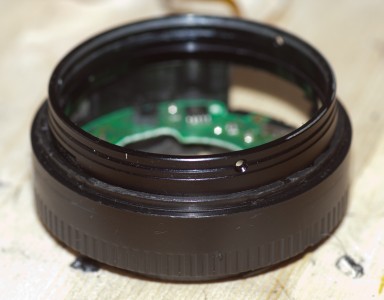
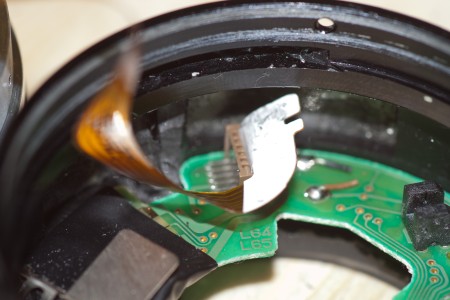
Here the Vivitar lens with Canon EF iris. Working for macro photography. F-stop values are not correct.
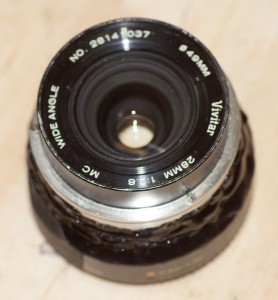
Here two sample images with left open iris, and right closed iris.
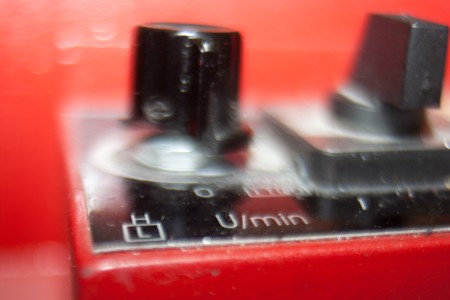
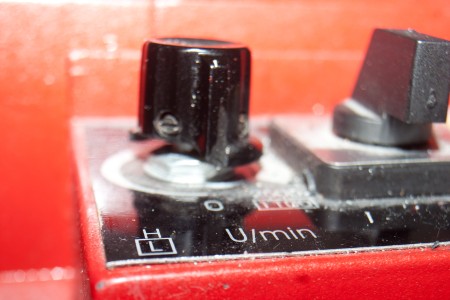
And here samples made with that lens, the automatic iris works very well.
Some years ago I did the same with an Minolta Rokkor 45mm f/2.0.
Please visit my other tinker work, or my DIY directory with ~1700 DIY links to other photo tinkering sites.

